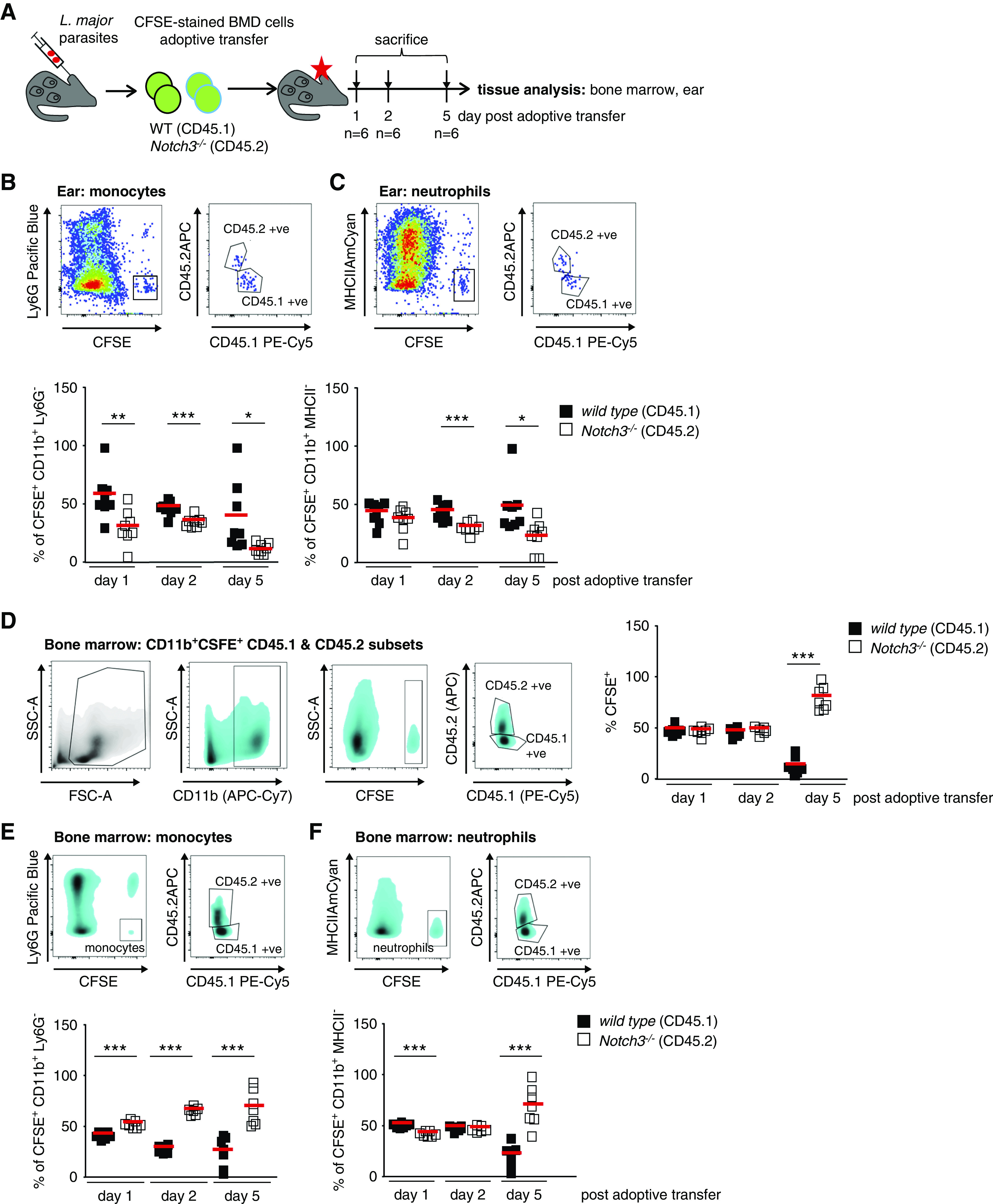Figure 4.

Notch3 receptor expression on immune cells is required for effective recruitment to site of Leishmania infection. (A) Experimental setup of adoptive BM cell transfer. CFSE-stained BM of WT (CD45.1) and Notch3-knockout (CD45.2) mice were adoptively transferred to recipients after 3 weeks of infection with dsRed-expressing L. major parasites in the ear dermis. Infected ear tissues were analyzed on days 1, 2, and 5 after application by flow cytometry. For further tracking of the immune cells, the immune cell composition of the BM was analyzed as well. (B and C) Representative flow cytometry plots of infected ear tissues to identify CSFE-stained WT and Notch3-knockout monocytes and neutrophils. Diagrams show the cell population frequencies quantified by flow cytometry. Mean values are indicated by red line. (D) Flow cytometry analysis of the immune cell composition within the BM revealed an equal contribution of WT and Notch3-knockout adoptively transferred cells at days 1 and 2 after transfer. At day 5, more Notch3-knockout cells were harvested from the BM, whereas there were fewer WT cells. (E and F) Representative flow cytometry plots of the BM to identify CSFE-stained WT and Notch3-knockout monocytes and neutrophils. Diagrams showing the cell populations frequencies measured by flow cytometry. Mean values are indicated by the line. FSC-A, forward scatter area; SSC-A, side scatter area. *P<0.05; **P<0.005; ***P<0.001.
